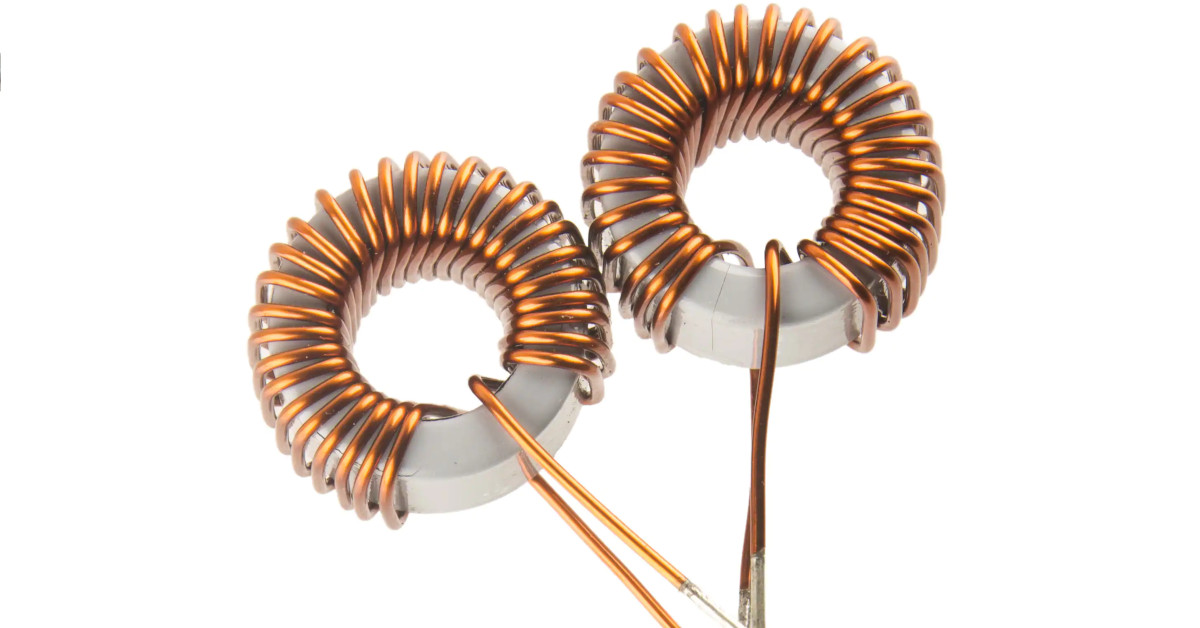An inductor is an electrical component that stores energy in a magnetic field when electric current flows through it. It is a passive component, meaning that it does not require an external power source to operate. Inductors are widely used in electronic circuits to filter signals, smooth power supplies, and store energy in various applications.
An inductor consists of a coil of conducting wire that is wound around a core made of a magnetic material such as iron or ferrite. The number of turns in the coil, as well as the shape and size of the core, determine the inductance of the device, which is a measure of how much energy it can store in a magnetic field. The unit of inductance is the henry, named after the American scientist Joseph Henry, who first discovered the phenomenon of inductance in the 1830s.
When a voltage is applied to an inductor, a current flows through the coil, creating a magnetic field around it. The magnetic field stores energy in the coil, which can be retrieved when the current is reduced or removed. The energy stored in the inductor is proportional to the square of the current flowing through it and the inductance of the device. The equation that relates the voltage across an inductor to the rate of change of current through it is known as the voltage-current relationship or the “inductor equation,” which is given by V = L di/dt, where V is the voltage, L is the inductance, and di/dt is the rate of change of current with respect to time.
Inductors are commonly used in electronic circuits to smooth out the variations in the voltage of a power supply. When a load is connected to a power supply, the current flowing through the load can vary rapidly due to changes in the load resistance or changes in the voltage of the power supply. This can lead to voltage fluctuations, which can cause problems for sensitive electronic components. An inductor can be used to smooth out these fluctuations by storing energy in its magnetic field and releasing it when the current decreases. This can help to maintain a stable voltage across the load.
Inductors can also be used in combination with capacitors to form resonant circuits, which are circuits that have a natural frequency of oscillation. In a resonant circuit, the inductor and capacitor store energy back and forth between their magnetic and electric fields, resulting in a sustained oscillation at the resonant frequency. This property of inductors and capacitors is used in many applications, such as radio tuning circuits, signal filtering, and oscillators.
In addition to their use in electronic circuits, inductors are also used in various other applications, such as transformers, electromagnets, and electric motors. A transformer is a device that uses two or more inductors to transfer electrical energy from one circuit to another. An electromagnet is a type of magnet that is created by passing an electric current through a coil of wire. The magnetic field produced by the current can be used for a variety of purposes, such as lifting objects or creating motion. An electric motor is a device that converts electrical energy into mechanical energy by using an electromagnetic field to generate motion.
Basically, an inductor is an electrical component that stores energy in a magnetic field when electric current flows through it. It is widely used in electronic circuits to filter signals, smooth power supplies, and store energy. Inductors can also be used in other applications, such as transformers, electromagnets, and electric motors. The properties of inductors and their interactions with other electronic components make them a versatile and essential part of modern electronics.

Leave a Reply